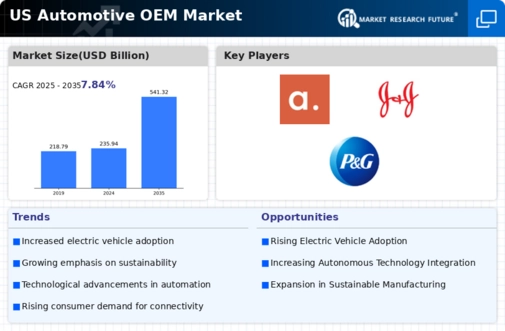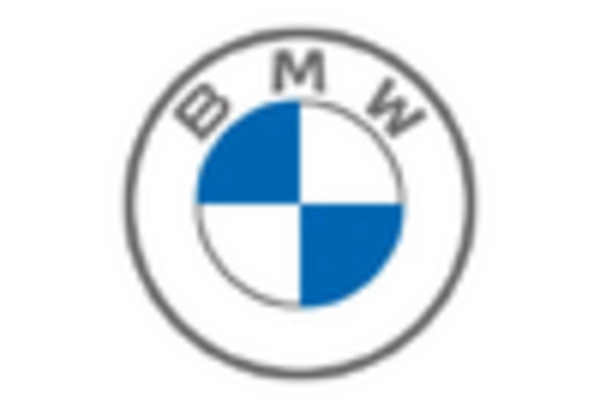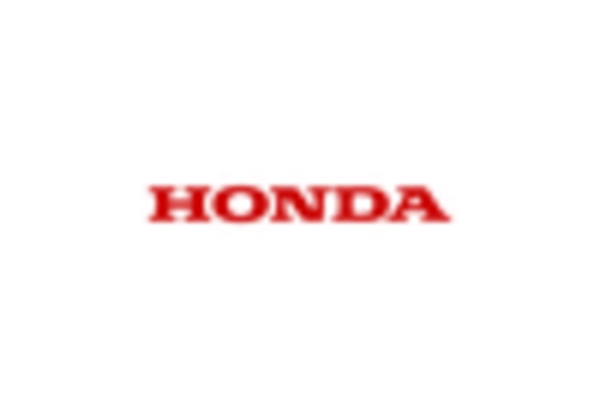Supply Chain Resilience
The automotive oem market is increasingly focused on enhancing supply chain resilience in response to disruptions experienced in recent years. Factors such as geopolitical tensions, natural disasters, and fluctuating raw material prices have highlighted vulnerabilities within the supply chain. As of November 2025, OEMs are prioritizing the diversification of suppliers and the localization of production to mitigate risks. This strategic shift aims to ensure a steady supply of critical components, particularly in the context of semiconductor shortages that have plagued the industry. By investing in robust supply chain management practices, manufacturers can better navigate uncertainties and maintain production efficiency, which is essential for sustaining competitiveness in the automotive oem market.
Focus on Safety Innovations
The automotive oem market is increasingly prioritizing safety innovations as a key driver of consumer choice and regulatory compliance. As of November 2025, advanced driver-assistance systems (ADAS) are becoming standard features in many new vehicles, with a significant portion of consumers indicating that safety technology influences their purchasing decisions. Innovations such as automatic emergency braking, lane-keeping assist, and adaptive cruise control are not only enhancing vehicle safety but also aligning with regulatory requirements for improved crashworthiness. This focus on safety is likely to shape product development strategies, as OEMs strive to integrate cutting-edge technologies that enhance both driver and passenger safety, thereby reinforcing their competitive position in the automotive oem market.
Regulatory Compliance Pressure
The automotive oem market faces increasing pressure from regulatory bodies to adhere to stringent environmental and safety standards. In the US, regulations such as the Corporate Average Fuel Economy (CAFE) standards mandate that manufacturers improve fuel efficiency and reduce emissions. This has led to a shift in production strategies, compelling OEMs to invest in advanced technologies and sustainable practices. As of 2025, the average fuel economy for light-duty vehicles is targeted to reach approximately 49 mpg, which necessitates significant innovation in vehicle design and manufacturing processes. Compliance with these regulations not only impacts production costs but also influences consumer purchasing decisions, as buyers increasingly favor vehicles that meet or exceed these standards.
Consumer Demand for Connectivity Features
The automotive oem market is witnessing a notable increase in consumer demand for connectivity features in vehicles. As of November 2025, nearly 70% of consumers express a preference for vehicles equipped with advanced infotainment systems and integrated connectivity options. This trend is driven by the growing reliance on technology in daily life, prompting OEMs to incorporate features such as smartphone integration, real-time navigation, and over-the-air updates. The integration of connectivity not only enhances the driving experience but also opens new avenues for revenue generation through subscription services and data monetization. Consequently, manufacturers are compelled to innovate and differentiate their offerings to meet evolving consumer expectations within the automotive oem market.
Advancements in Electric Vehicle Technology
The automotive oem market is experiencing a transformative shift due to advancements in electric vehicle (EV) technology. As of November 2025, EV sales in the US have surged, accounting for nearly 25% of total vehicle sales, driven by improvements in battery technology, charging infrastructure, and consumer awareness. OEMs are investing heavily in research and development to enhance battery efficiency, reduce costs, and extend vehicle range. This trend is further supported by federal incentives aimed at promoting EV adoption, which could potentially lead to a more sustainable automotive landscape. The growing demand for EVs compels traditional manufacturers to adapt their production lines and strategies, thereby reshaping the competitive dynamics within the automotive oem market.

















Leave a Comment